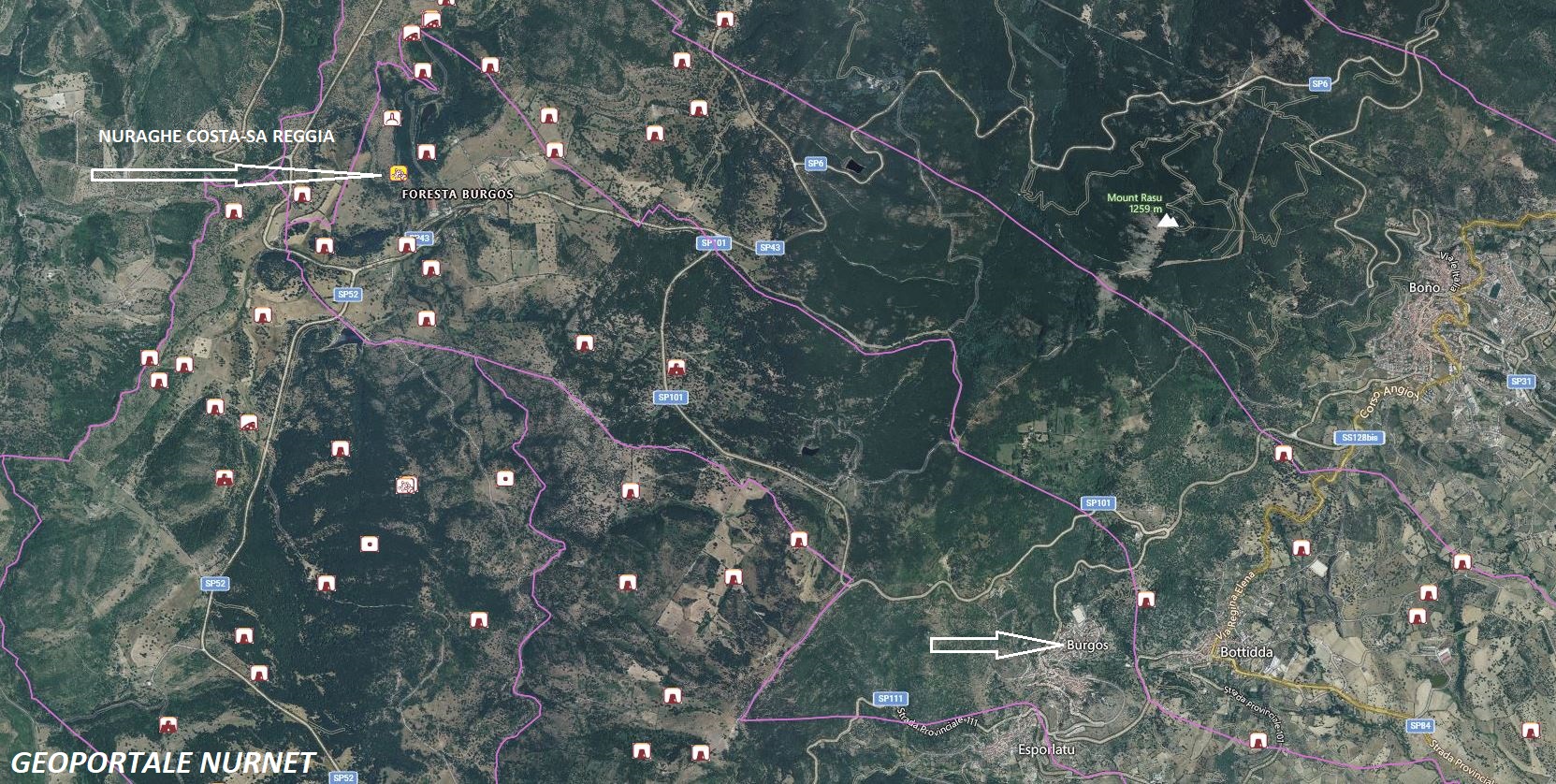Covered by a blanket of very green moss and buried under millennia of dust, it is known asthe Royal Palaceand is at the center of the enchanted scenery, among woods and meadows, of Foresta Burgos, one of the most beautiful natural oases of the Island. The nuraghe Costa, in the territory of Burgos, is an imposing prehistoric fortress, among the largest, most spectacular, and best-preserved in Sardinia: for millennia it was the center of control of the fairy-tale landscapes of Goceano. You will reach it at the top of a ridge 800 meters high, walking along a one-kilometer path in the locationthe Pranigheddu of s’Unighedda, passing through the Costa stables. The road crosses a very dense part of the lush forest of centuries-old oaks and holm oaks – the realm of horses of various breeds – of Burgos, a medieval village located about ten kilometers away.
The architecture, dating back to the 14th century BC, covers 450 square meters and includes a pentalobate nuraghe, consisting of a central tower (mastio) and a bastion with four smaller towers, a village, and a powerful antemurale. The main ogival entrance leads into a corridor that leads to the stairs for the upper floors. The mastio, made of basalt blocks, has a diameter of 14 meters and overlooks a courtyard, from which the entrance corridors to the secondary towers opened; of one of them, you will see part of the walls. Surrounding the bastion is the village, of which about 40 circular huts have been identified to date, inhabited, according to studies, by about a hundred families (400-500 people): you will clearly notice the foundations of some with a perimeter of about ten meters. The element that most characterizes and makes the monument unique on the Island is the antemurale overlooking a cliff: it is an almost intact defensive structure, built with enormous interlocking boulders, now 70 meters long and three meters high, which exceptionally preserves the ‘walkway’, like those of medieval castles, over a meter wide. This is an imposing military construction for those times, as well as impregnable: here the Roman legions did not arrive, they will never conquer this ‘castle’ and the mountains of Goceano.
The fortified village, the largest fortress ofthe Nuraxiof Barumini, it was perhaps the ‘capital’ of a vast territory dotted with visually interconnected nuraghi: it was the land of theIlienses, populations of warriors, farmers, and shepherds, described by Livy and other ancient historians. The excavations have not only uncovered nuragic artifacts, including a fibula and bronze needles. In the area, there are also two Giant’s tombs and acromlechThe presence of this megalithic circular structure – common in Great Britain and in the territory of Laconi, rich in menhirs – indicates the occupation of the area prior to the nuragic age, between the Early Bronze Age and the very early nuragic phase (17th-16th century BC).
(from Sardegna Turismo)
The photos of the nuraghe Costa –Sa Reggia are by: Nicola Castangia, Sergio Melis, Francesca Cossu, and Marco Cocco










